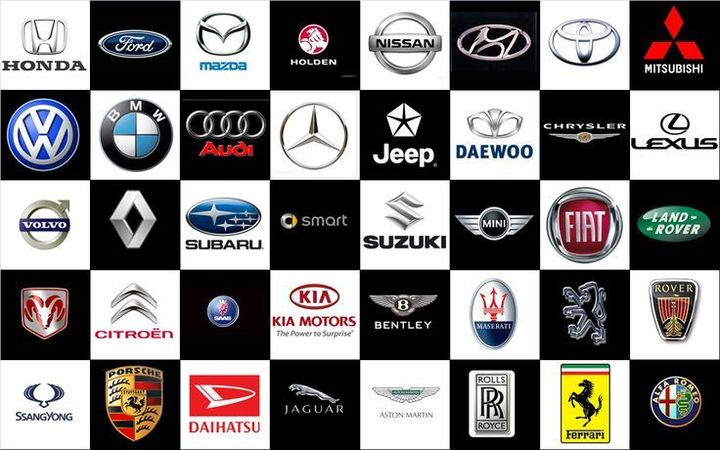
Ever say that at a restaurant or stadium?
You more than likely have said "I'll have a Coke" or "I'll have a Pepsi" but probably not "I'll have a cola."
That's the power of branding.
A key element of differentiating from the competition, a powerful brand can illicit loyalty from satisfied customers and typically allow a company to charge a higher price relative to its competitors.
Consumers regularly pay more for branded products as compared to store brands, and they will pay even more for a premium brand as compared to a mass-market brand.
A brand is often identified by a trademark or trade name - a recognizable logo that identifies the product and/or manufacturer.

Some of the most iconic transformations of a brand's identity are the ones in which the brand becomes synonymous with a the object as a noun or verb.
For example, when someone asks for a "Q-tip" or a "Kleenex" (instead of a cotton swab or tissue) - or when someone says "Google this" or "FedEx that" rather than requesting an internet search or using expedited shipping.
But this type of recognition doesn't necessarily last forever. Have you heard anyone ask to make a "Xerox" of something recently?
The Value of a Brand
A company is made up of both tangible and intangible assets. Tangible assets include things like machinery, buildings and land, as well as inventory. Intangible assets are non-physical in nature.
A brand or trademark is an intangible asset that is often referred to in a broader context as intellectual property and is recognized on a company’s balance sheet as an intangible asset separate from goodwill. If you're curious, you can view the world's most valuable brands as ranked by Forbes.

There are a number of reasons why the value of a brand matters. Some include the following:
Transactional purposes. A buyer may want an independent valuation of a trademark or a lender may require the valuation of a trademark before it can be pledged as collateral for a loan.
Financial accounting purposes. Financial accounting requirements come into play when a trademark is acquired in a business combination.
Tax compliance purposes. Establishing the tax basis in transactions involving the sale or transfer of trademarks.
Valuing The Brand
In previous articles I've discussed two valuation techniques - an Income-basedvaluation method and a Market-based valuation method. (If you're not familiar with these valuation techniques and you'd like to learn a little about them, you might enjoy taking a peek into these methods from one of my most popular articles.)
The valuation of a brand often involves the use of a hybrid of both the Income and Market methods, known as the Relief From Royalty Method. (We're talking about royalty fees, not royal families.)

The idea here is that if the company didn't own the trademark, they'd have to pay a royalty fee for the right to license the trademark. By actually owning the brand, the company is relieved from having to pay such a royalty fee. Thus the name, 'Relief From Royalty.'
Like most things in valuation, the valuation of a brand is a forward-looking exercise, where the value of the asset today is equal to the present-value of the asset's cash flows in the future. In the case of a brand, the 'cash flows' are typically sales.
These sales are the basis for which a royalty payment is made - the one that the company would have to pay if it didn't own the brand. This is where the elements of a Market-based method come into play.
The appropriate royalty fee is derived from researching comparable brand/product licensing deals and benchmarking the brand in question relative to these market-based transactions.
Applying the appropriate royalty rate to the estimated sales over the expected life of the brand results in the royalty fees that are avoided by owning the brand.

The avoided royalty payments into the future are then present-valued at an appropriate risk rate and converted into today's dollars.
The key takeaways here are:
- The better-known brands will command a higher royalty rate, and a higher royalty rate results in a higher value of the brand.
- The better-known brands will be considered to be of a lower-risk, and a lower risk rate results in a higher value of the brand.
So whether you're wondering what the value of your company's brand is or you're just contemplating a bottle of generic ketchup when you're at the grocery store, you now have an idea of how to go about valuing the branded alternatives.
And I'll have a Coke Zero.
Thanks for reading - If you enjoyed the post, please share it with others who might like it.
About the Author:
Dave Bookbinder is a Director of Valuation Services at EisnerAmper where he helps his clients with the valuation of businesses, intellectual property, and complex financial instruments.

More than a valuation expert, Dave is a collaborative consultant who serves companies of all sizes, both privately held and publicly-traded. Dave lends his business experiences to help people with a variety of matters. For more about Dave, or to schedule a conversation, visit his LinkedIn profile.
Do you believe that people are a company's most valuable asset? You might enjoy Dave's #1 best-selling book, The NEW ROI: Return on Individuals, which explores the impact that people have on the value of a business.

For future insights and articles, connect with Dave on LinkedIn, like him on Facebook, follow him on Twitter, #NEWROI and subscribe to his business blog at Huff Post.
You might also enjoy some of Dave's other articles.
Views and comments are my own.
_______________________________
